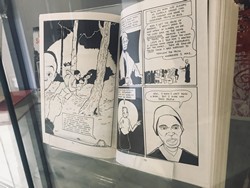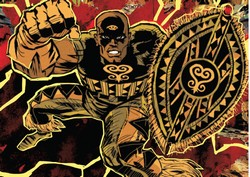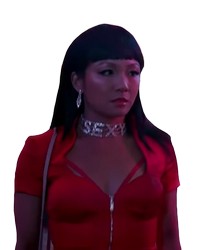Recently, Monmouth welcomed an art exhibit in the Guggenheim Memorial Library called Afrofuturism Design: From Ancient Dogon to Wakandan Futures. The intriguing exhibit features books, comic book artwork, DVDs, and more along the walls of the first and second floor glass cases.
The exhibit is meant to display the struggles and triumphs that African Americans have gone through in the United States. It displays pieces portraying the time of slavery to Wakanda comic book art.
It all started with the School of Education’s Associate Professor and Chair Walter Greason, Ph.D., who writes about the racial wealth gap and patterns of economic globalization.
The exhibit had come up through multiple conversations between Greason and University Librarian Kurt Wagner because of Greason’s constant presence in the library. After the last Bruce Springsteen exhibit, Wagner asked Greason on his opinion of a new exhibit and the decision was made to bring the cultural and educational exhibit to our school.
Greason is an accomplished professor who has trained multiple professions in anti-racism, is the author if six books focused on topics surrounding African-Americans throughout history, and also worked on humanities projects such as The Wakanda Syllabus and The Racial Violence Syllabus, which was inspired by the Oscar-winning film BlackKklansman. Additionally, his Wakanda Syllabus designated the public’s praise of the 2018 film, Black Panther.
Greason’s past accomplishments and expertise were all more of a reason to bring the exhibit here.
 With excitement he said, “This exhibit is the first to focus on the African continent and diaspora across time and in the context of innovative research at Monmouth University. Afrofuturist Design enables every visitor to learn about the interdisciplinary genius of black scholars around the world.”
With excitement he said, “This exhibit is the first to focus on the African continent and diaspora across time and in the context of innovative research at Monmouth University. Afrofuturist Design enables every visitor to learn about the interdisciplinary genius of black scholars around the world.”
Afrofuturism has the potential to have a different meaning for everyone, but to Greason, “Afrofuturism for me is the exploration of the problem of the twentieth century—the color line—as described by W.E.B. DuBois.”
He continued with, “Like the Harlem Renaissance and the Black Arts Movement, the scholars and artists of the Black Speculative Arts movement challenge the world to value and reward the aesthetic and academic explorations of the African continent and diaspora.”
Wagner added that it’s a wonderful idea to have pieces from science-fiction in the exhibit because of what science fiction represents, and described his biggest realization through Afrofuturism.
He said, “I’m a science fiction fan. Always active in my imagination using science fiction as a vehicle for “what if” and I never ran into a situation of really feeling limited that that kind of future wasn’t possible. But what I realized through Greason and Afrofuturism, was that generations of African-Americans were robbed of the ability to have the ability to have that science fiction aspiration or maybe having a fantasy.”
Wagner continued with, “They knew from the realities of their oppression, that their people were denied that kind of fantasy. I thought back on how much science fiction had been formative for me imagine if I couldn’t even have that and that was very, very strong and that’s what Afrofuturism means to me.”
Both Greason and Wagner hope this brings diversity to the front lines of our school. Wagner said that apart of Monmouth’s mission to encourage diversity, he wants the exhibit to, “Help develop in our students an appreciation for the diversity of our world and the importance of interacting with and learning from a variety of cultures.”
Greason added, “Now the students have the opportunity to learn much more about Indigenous and African diaspora cultures. This exhibit opens our campus to people and communities that have too often been ignored.”
Wagner stated that the pieces in the exhibit represent the black experience through an uncomfortable history and physical bondage from enslavement and Jim Crow era to today, which he hopes will resonate with students.
The curators agreed that the library is such a fitting place to welcome the exhibit because it is a place that brings people, cultures, and experiences together.
The exhibit is on display at the Guggenheim Memorial Library through Nov. 16.
IMAGES TAKEN from magazine.art21.org
PHOTO TAKEN by Erin Mulligan




